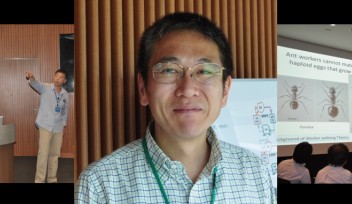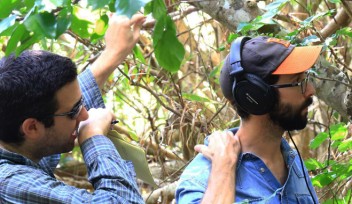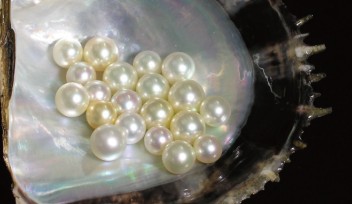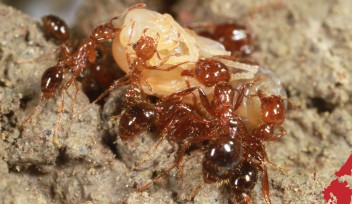Genome Jamboree: Pearl Oysters
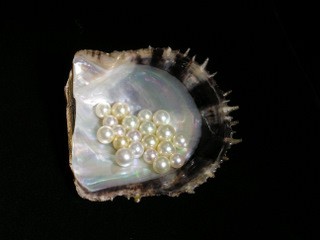
Photo by MIKIMOTO
By Kaoru Natori
They say when you marry in June, you are a happy bride all your life. Pearls, the official birthstone of the month of June, have traditionally been a feature of bridal attire and an option for bridal gifts because of their beautiful white luster and purity.
Natural pearls are formed randomly. When a certain type of irritant becomes lodged in the tissue of a mollusk, the animal responds by secreting a calcium carbonate substance called nacre to coat the intruder and protect the mollusk. Over a period of several years, this build-up of nacre forms a natural pearl. However, the mechanism behind this simple accident of nature is still not understood.
From May 31 to June 2, five researchers from the Marine Genomics Unit, led by Dr. Noriyuki Satoh, and nineteen mollusk researchers from seven universities and research institutions across Japan, gathered at the OIST campus for the "Japanese Pearl Oyster Genome Jamboree."

|
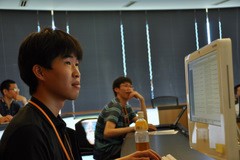
|
The jamboree began with a description of the ongoing project to decode the pearl oyster genome by Dr. Takeshi Takeuchi of the Marine Genomics Unit, who reported that fragments of the gene sequences had already been deciphered. For the rest of the three-day meeting, the participants explored unique characteristics of the pearl oyster genome. Using computers, they compared the decoded sequences with genes of other animals to find similarities, and to investigate any specific increase or decrease in the number of the similar genes in pearl oysters.

Dr. Takeshi Takeuchi |
Dr. Takeuchi, who began working on sequencing the pearl oyster genome before joining OIST, explained, "Shells are a unique structure only found in mollusks, including pearl oysters, giant clam shell, snail shells, and limpet shells. Through years of evolution, it is believed that mollusks gained the ability to form shells. When the whole genome of pearl oysters is sequenced, discovering a gene contributing to the molluscan evolution becomes possible. This will give information on the underlying mechanism behind the formation of beautiful pearls within the oyster."
In this "Genome Jamboree," the participants annotated the pearl oyster genes through computing and analyzed sequences to infer their functions. In order to verify the outcome of their study, biological experiments are required. The complementary skills and experience of both experimenters and computer scientists have driven this project forward.
Dr. Takeshi Kawashima of the Marine Genomics Unit, who also played a key role in organizing the "Genome Jamboree," emphasized the significance of the project. "Successful sequencing of the pearl oyster genome is meaningful because mollusks belong to a much larger group of animals called Lophotrochozoa. No animal of this group has been fully understood at the genetic level. Also, the pearl oyster can become a model organism for genetics studies of mollusks, so understanding its basic information is important. Historically, Japan has taken the lead in cultured pearl business, so a success by Japanese researchers in decoding the pearl oyster genome will be correspondingly exciting."

Dr. Takeshi Kawashima |
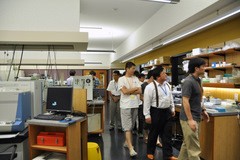
|

|
|
Participants take a tour of the OIST campus |
|
Specialty
Research Unit
For press enquiries:
Press Inquiry Form











